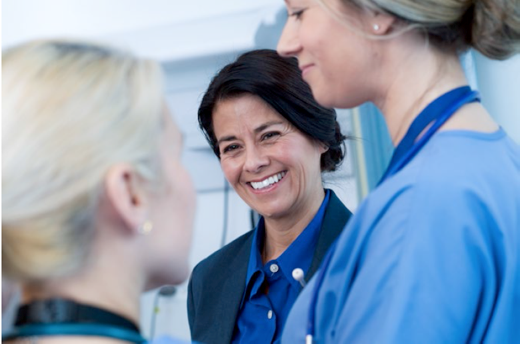Featured
Tags
Share

Students in Chamberlain College of Nursing’s Master of Science in Nursing (MSN) Executive Specialty Track complete all their coursework online. When it comes to completing their practicum experiences, the geographical diversity of the students makes coming together in person a challenge. However, through the use of the Virtual Learning Environment (VLE), Chamberlain is forging the way in developing clinical experiences that emphasizes the application of theory, using scenarios like the recent Zika and Ebola pandemics, and gives students a virtual space for collaboration.
Since Chamberlain faculty can customize the virtual learning space to address any health scenario, MSN students are given the unique opportunity to collaborate with and learn from one another in an innovative and supportive environment. Thanks to the customizable ability of the VLE, students are exposed to more diverse, complex situations they might not encounter in their local communities, such as treating a patient with highly infectious disease or a rare condition not typically found here in the U.S.
One such scenario that Chamberlain MSN students recently participated in involved creating better access to cardiac care for two diverse neighborhoods through the Virtual Learning Environment. The first virtual neighborhood was in an affluent part of town while the other neighborhood included many lower income families with diverse health needs. Using actual income, insurance, demographic and disease data from the U.S. Department of Health to develop the patient population in these two neighborhoods, students needed to understand the specific needs of these communities to come up with a solution that would serve both patient populations. Based on the data from the U.S. Department of Health, students developed a cardiac wellness center within the VLE that addressed not only the primary health concerns of both communities but provided increased access to care for families.
“In everyday situations, students would not be able to physically build a new health center, but this simulated exercise allowed for students to collaborate together, and come up with a plan to provide extraordinary care to patients,” said Dee McGonigle, PhD, RN, FAAN,CNE, ANEF, professor in Chamberlain’s MSN degree program. “Along the way, faculty members provided feedback in real-time, supporting the students and helping them expand their clinical competencies within this virtual community of care.”
The use of Chamberlain’s virtual learning environment provides students the ability to expand their practicum experiences by working through scenarios that they otherwise would not have encountered. And as a result, students develop the skills necessary to care for diverse patient populations while building their own communities of care.
Read more about Chamberlains Virtual Learning Experience at http://www.chamberlain.edu/blog/nursing-students-find-new-opportunities-in-virtual-world-of-second-life/
By Molly Mattison
More from Home
Request More Information
To receive the Chamberlain University Program Guide, including associated career paths, please select a program of study.






